Chardonnay, the beloved white wine known for its versatility and wide range of flavors, has captured the hearts of wine enthusiasts around the world.
Whether you prefer a crisp and unoaked Chardonnay or a rich and buttery expression, one question often comes to mind: How long is Chardonnay good for?
Understanding the optimal aging potential of Chardonnay can enhance your wine-drinking experience and help you appreciate it is evolving characteristics.
In this blog post, we will explore the factors that influence the shelf life of Chardonnay, the optimal drinking window for different styles, signs of aging, and expert tips for preserving this delightful white wine.
So, grab a glass of Chardonnay and join us on this journey to uncover the secrets of its longevity.
Let’s dive in!
1. How Long is Chardonnay Good for?
The shelf life of Chardonnay can vary depending on various factors, including the winemaking process, storage conditions, and the specific vintage.
In general, Chardonnay is a white wine that is known for its ability to age gracefully, especially if it is well-made and stored properly.
Typically, an unoaked or lightly oaked Chardonnay is best consumed within 3 to 5 years of the vintage date.
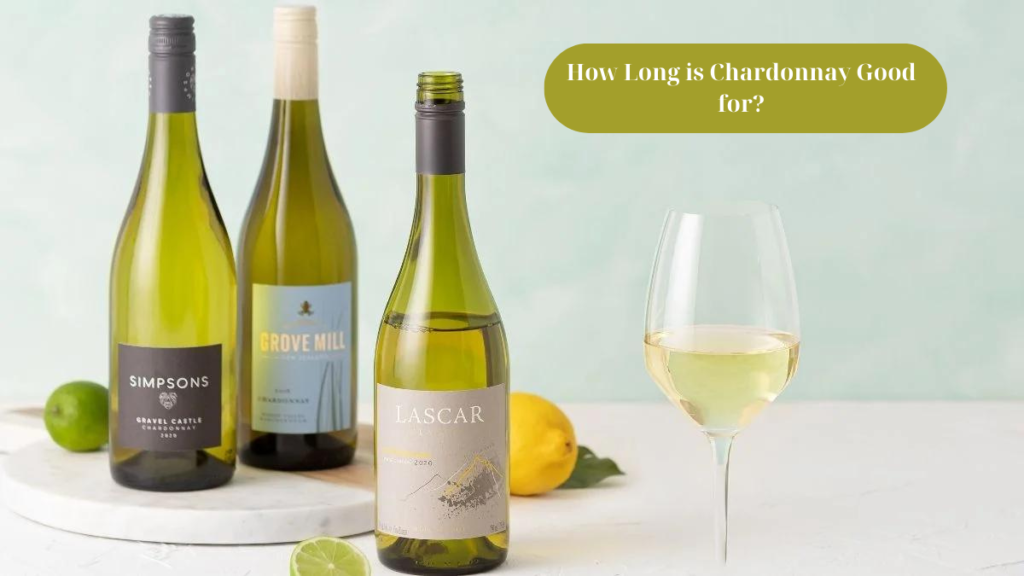
These wines are prized for their fresh, vibrant flavors and fruit-forward characteristics, and they are meant to be enjoyed in their youth.
On the other hand, oak-aged or full-bodied Chardonnays have the potential to develop more complex flavors and undergo a process called bottle aging. These wines can be enjoyed for 5 to 10 years or even longer, depending on the specific wine and its quality.
As they age, these Chardonnays can exhibit richer flavors, subtle oak nuances, and increased depth.
2. What Can I Do to Make Chardonnay Last Longer?
It’s not suitable for the sun, so you should keep your bottle of Chardonnay cold and dark once you buy it.
Additionally, you should turn the bottle over so that the cork doesn’t dry up and let air in.
This is especially important if the bottle contains a cork. Some individuals say that in order to more readily detect whether the wine is accumulating sediment as it matures, you must put the bottle of wine on its side.
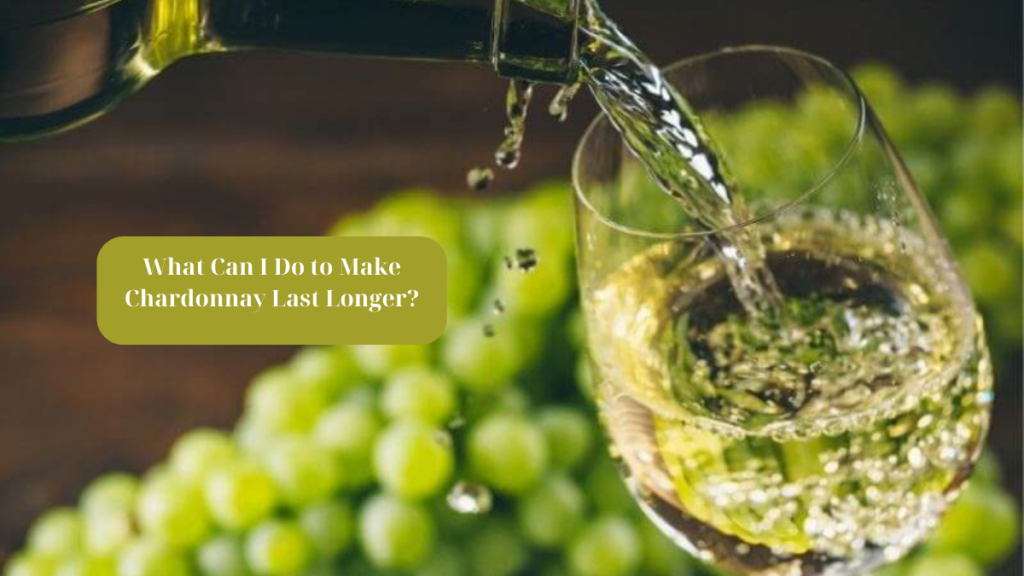
Unless you want to keep a Chardonnay for a long time and are interested in how it develops, this isn’t really essential. As a consequence of wine aging, sediment is safe.
Of course, not all Chardonnays need to be matured. Some foods must be consumed within a year of being placed on store shelves.
3. Expert Tips for Enhancing Chardonnay’s Longevity
- Proper Storage: Store Chardonnay bottles horizontally to keep the cork moist and prevent oxidation. Maintain a consistent temperature between 50-55°F (10-13°C) to slow down the aging process. Avoid exposing the wine to direct sunlight or extreme temperature fluctuations, as these can negatively impact its quality.
- Controlled Serving Temperature: Serve Chardonnay at the right temperature to preserve its flavors. For unoaked Chardonnay, aim for a serving temperature between 45-50°F (7-10°C), while oaked Chardonnay can be served slightly warmer at 50-55°F (10-13°C). Use a wine thermometer or let the wine rest in the refrigerator for a while before serving.
- Decanting and Aeration: Young Chardonnays can benefit from decanting or aerating to enhance their flavors and aromas. This process exposes the wine to oxygen, allowing it to open up and develop more complexity. Pour the wine into a decanter or simply swirl it in the glass to introduce air before enjoying.
- Optimal Glassware: Use the right glassware to fully appreciate the nuances of Chardonnay. Choose a medium-sized glass with a wide bowl and tapered rim to capture and concentrate the aromas. This will enhance your sensory experience and allow the wine to breathe.
- Food Pairing: Pair Chardonnay with complimentary dishes to elevate its flavors. Unoaked Chardonnay pairs well with seafood, poultry, and light pasta dishes. Oaked Chardonnay can stand up to richer flavors like roasted chicken, creamy sauces, and buttery dishes. Experiment with different food pairings to discover delightful combinations.
- Slow and Controlled Aging: If you’re interested in aging Chardonnay, consider storing it in a temperature-controlled cellar or wine refrigerator. Monitor the wine’s development over time and assess its progress regularly. Keep in mind that not all Chardonnays are suitable for long-term aging, so consult with a knowledgeable wine expert or review specific recommendations from the winery.
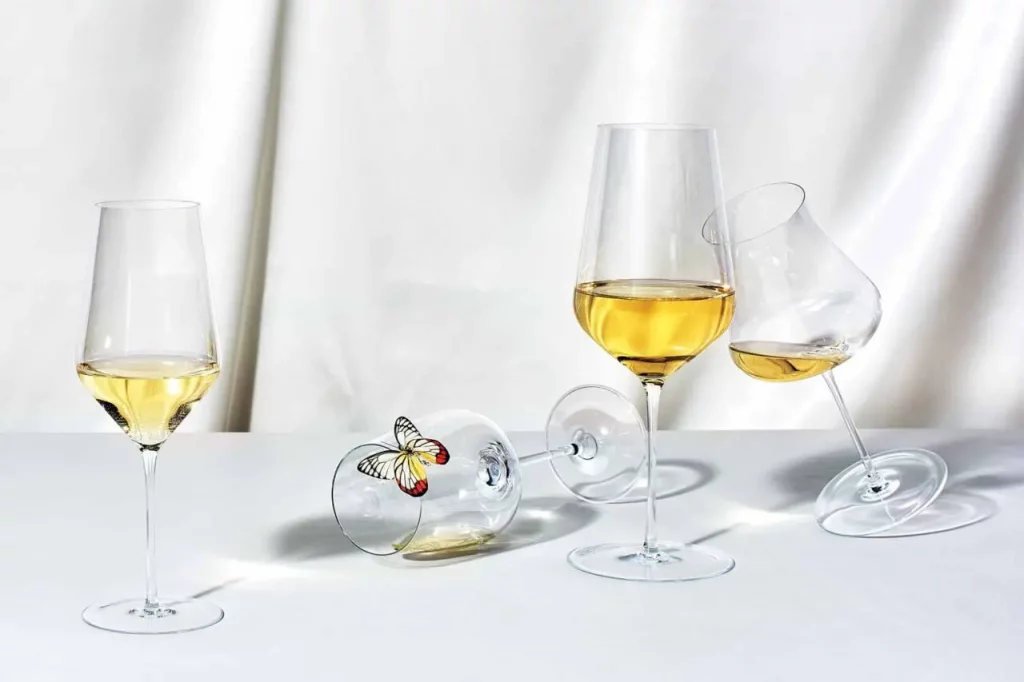
4. What Should I Do Immediately After Opening Chardonnay to Make it Last Longer?
When you’re through drinking the wine, put the cork or screw top back on and store it upright in the refrigerator. Try to put it in a location where it won’t be frequently moved. The refrigerator’s door appears to be quite functional.
However, you can be sure that having your family open and close the refrigerator a dozen times before midday will not help the wine stay fresh.
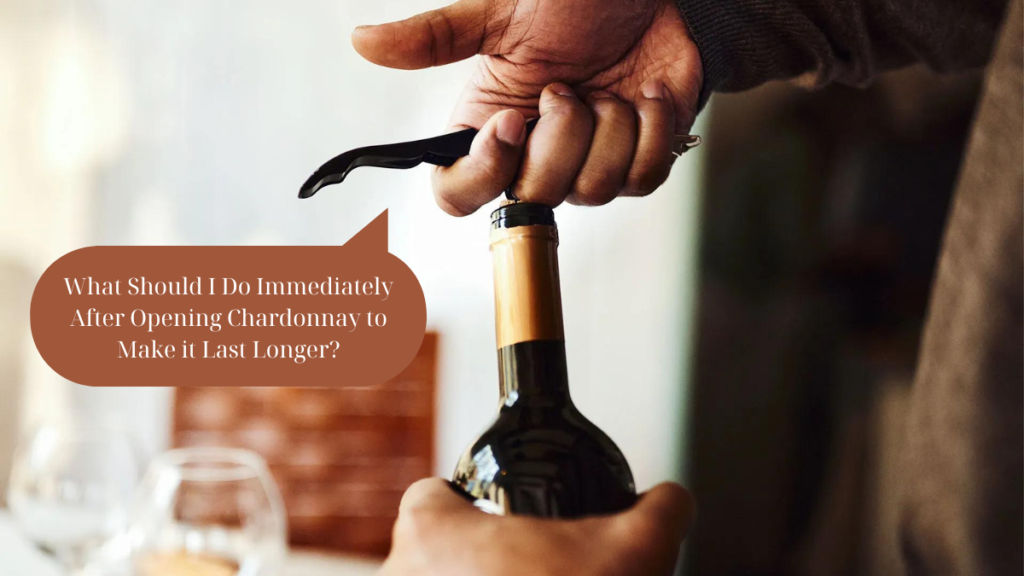
Sparkling Chardonnay is best enjoyed immediately away. Similar to a two-liter Coke bottle, it tastes best right away. From then, things become worse, but cold weather can somewhat delay this development.
You can also like:
- How Many Calories Are In A Bottle Of Pinot Noir?
- Merlot vs Cabernet Sauvignon: Explore the Key Differences
- How Many Bottles of Wine Can I Carry on a Plane? – Here’s Your Answer
5. What degree of heat should a Chardonnay be stored at?
Although there are varying views on this matter, it is generally agreed that a fine Chardonnay should be stored at or around 60 degrees Fahrenheit (15 degrees Celsius).
The ideal temperature for Chardonnay is no more than 80 degrees Fahrenheit (27 degrees Celsius).
The natural acidity in the wine will dissolve due to the high temperature, leaving behind disagreeable aromas and tastes.
Additionally, excessive heat can cause the wine to oxidize, which will alter its flavor and fragrance.
A Chardonnay should be kept in a dark area away from direct sunshine to avoid oxidation.
The wine should ideally be kept in a sealed glass container without any additional oxygen.
By keeping oxygen out of the bottle, corking reduces oxidation, which slows down the rate of wine deterioration.
6. How long does a Chardonnay need to be aged before it is ready to drink?
A Chardonnay is best enjoyed when it is at its ripeness peak. The wine is suitable to drink once the sugar level has been sufficiently lowered.
Some individuals like to wait until the fruitiness completely disappears, while others enjoy some leftover sweetness.
In any case, it’s crucial to allow the wine to breathe for a few weeks or months before tasting it. The tastes might intensify as a result.
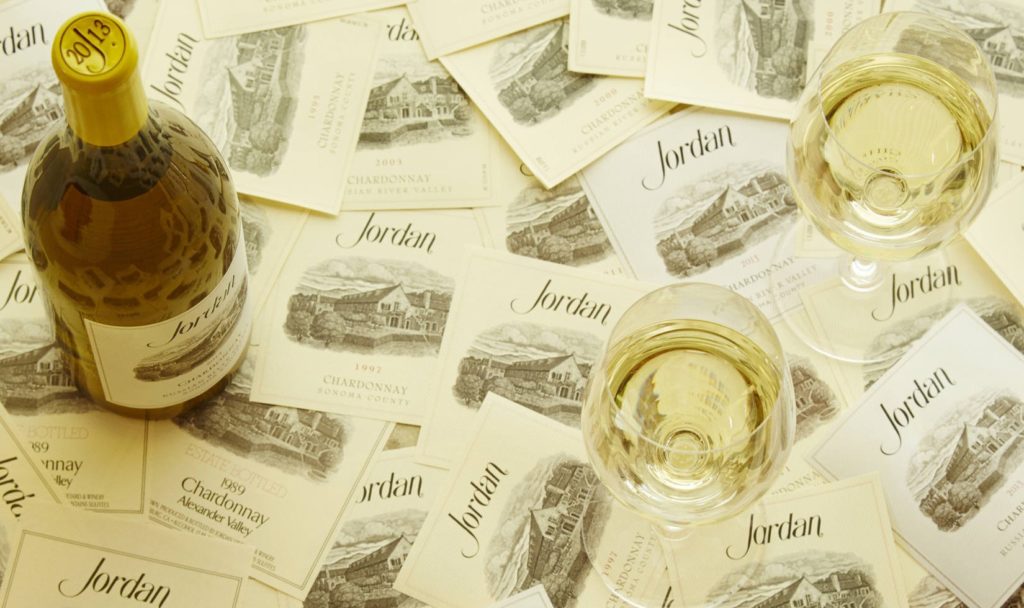
Remember that a Chardonnay grows better the longer wine is aged if you want to do so.
This implies that you will get to witness the wine change over time. If you purchase a bottle now, it will probably still be delicious in a few years.
However, if you didn’t open it for ten years, you could be let down since the wine isn’t quite as delicious as it once was.
7. How do you know when a bottle has gone bad?
Knowing when a bottle of wine has gone bad can be helpful in ensuring a pleasant drinking experience. Here are some signs to look out for:
- Cork Issues: If the cork is pushed out, cracked, or crumbling when you remove it, it may indicate that the wine has been exposed to excessive oxygen, leading to spoilage.
- Unpleasant Aromas: If the wine smells like vinegar, wet cardboard, or a musty basement, it is likely spoiled. These off-putting aromas can be indicative of bacterial or chemical spoilage.
- Oxidation: Oxidized wine often exhibits a brownish or brick-orange color, especially in white wines. Additionally, if the wine tastes flat, dull, or excessively acidic, it may have been exposed to too much oxygen.
- Foul or Off Flavors: If the wine tastes noticeably sour, bitter, or overly vinegary, it has likely turned bad. Unpleasant flavors can arise from microbial spoilage or the growth of harmful bacteria.
- Fizziness or Effervescence: If the wine is not supposed to be sparkling but displays carbonation or excessive fizziness, it may have undergone secondary fermentation in the bottle, indicating spoilage.
- Sediment or Cloudiness: While sediment is common in certain wines, excessive sediment or a cloudy appearance in an unfiltered wine could signify spoilage or improper storage.

It’s important to note that not all these signs are definitive proof of a bad wine, and some characteristics may be intentional in specific wine styles. However, if multiple signs are present, it is best to err on the side of caution and consider the wine as spoiled.
8. Factors Influencing the Shelf Life of Chardonnay
The shelf life of Chardonnay, like any other wine, can be influenced by several factors. Understanding these factors can help you determine how long a bottle of Chardonnay can be stored before its quality starts to deteriorate. Here are some key factors that can affect the shelf life of Chardonnay:
- Wine Style: The style of Chardonnay plays a significant role in its aging potential. Unoaked or lightly oaked Chardonnays are typically meant to be consumed within a few years of their vintage. These wines emphasize freshness and fruit-forward characteristics, and their flavors can diminish with prolonged aging. On the other hand, oaked or full-bodied Chardonnays have the potential to develop more complex flavors and undergo positive bottle aging.
- Winemaking Techniques: The winemaking techniques employed by the producer can impact the aging potential of Chardonnay. Factors such as fermentation methods, use of oak barrels, lees stirring, and malolactic fermentation can contribute to the wine’s structure, flavors, and aging ability. Wines made with careful attention to detail and quality craftsmanship are more likely to have a longer shelf life.
- Storage Conditions: Proper storage conditions are crucial for maintaining the quality of Chardonnay over time. Temperature, humidity, light exposure, and stability all play important roles. Ideally, Chardonnay should be stored in a cool, dark place with a consistent temperature between 50-55°F (10-13°C). Exposure to high temperatures or frequent temperature fluctuations can accelerate the aging process and lead to premature deterioration.
- Bottle Closure: The type of closure used, such as natural cork, synthetic cork, or screw cap, can influence how well the wine ages. Natural cork allows for a slow exchange of oxygen, which can contribute to the wine’s development over time. Synthetic corks and screw caps provide better seal and protection against oxidation, which can be beneficial for preserving the wine’s freshness and fruitiness in the short to medium term.
- Vintage Variation: Each vintage of Chardonnay can exhibit unique characteristics based on weather conditions, grape quality, and harvest timing. Some vintages may have better aging potential than others, and it’s essential to consider the specific vintage when assessing the shelf life of a Chardonnay.
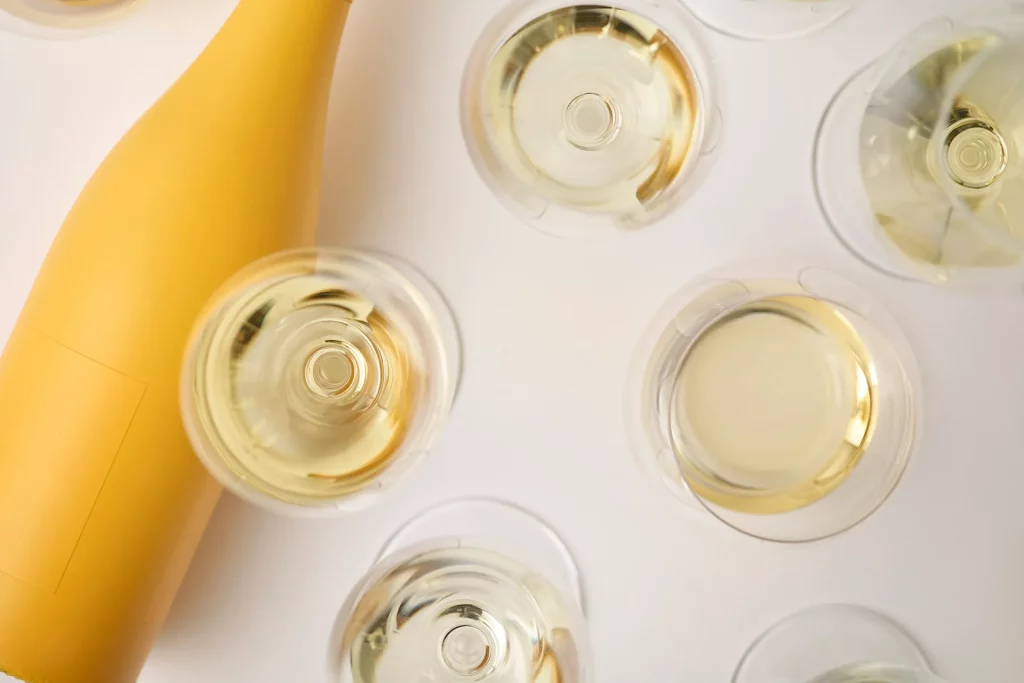
9. Which Chardonnays are the most well-liked ones?
While many individuals enjoy drinking Chardonnay straight from the refrigerator, others enjoy experimenting with other serving options.
Here are two excellent choices.
1. Offer cold
You’ll like serving chilled Chardonnay if you enjoy a great, cool glass of wine.
One of the easiest ways to serve Chardonnay, it pairs well with salads and seafood meals.
Pour your preferred Chardonnay into a big pitcher when it has chilled.
Give each person a glass, then season with salt, pepper, lemon juice, and ice.
2. Insert bubbles
Champagne is a great option if you want to make your wine fizzy.
You may easily add a splash of Champagne to any Chardonnay because the majority of Champagnes don’t have any added carbonation.
Champagne and sparkling wine can be combined if you really want to go all out.
10. FAQs
10.1. Is two-year-old Chardonnay still drinkable?
When released or within 1-3 years of the vintage date, the majority of California Chardonnays are ready to be enjoyed. Balanced white wines like Jordan, which have less alcohol and brighter acidity, can be stored and enjoyed for 5-7 years following harvest.
10.2. If left unopened, can Chardonnay spoil?
Unopened white wines keep for 1-2 years after the suggested drinking window. Due to the smaller amount of natural preservatives, this takes less time than red wine. Store your white wine similarly to how you would red wine up until 1-2 days before opening.
10.3. Is it okay to consume vintage Chardonnay?
Drinking wine that is past its prime won’t harm you, even though it might not taste great. Always keep in mind that you should avoid attempting to age wine.
10.4. Can you still drink six-year-old Chardonnay?
After bottling, most white wines should be drunk within two to three years. Full-bodied wines like chardonnay (three to five years) and Roussanne (best between three and seven years) are exceptions to this rule. However, good Burgundy white wines (French Chardonnays) are best drunk between the ages of 10-15.
10.5. Can white wine be enjoyed ten years later?
1-2 years past the listed expiration date for white wine.
- Red wine: two to three years past the printed date of expiration.
- 3 to 5 years after the printed expiration date for cooking wine.
- Fine wine should be aged 10 to 20 years and kept in a wine cellar.
10.6. How do you tell if a bottle of Chardonnay is bad?
You can tell whether a bottle of Chardonnay is rotten by its color, aroma, and flavor. White wine that has been spoiled, aged, or otherwise compromised darkens in color, tastes sour or musty, and occasionally contains bubbles despite being a still wine. Bad Chardonnay is generally not hazardous, just unpleasant to drink.
10.7. How long does unopened Chardonnay wine last?
White wines oxidize significantly more quickly since they have little to no tannin; storage is crucial! White wines that are made to age, like Grand Cru Burgundy or Grosses Gewachs Riesling, can age contentedly for decades.
A ready-to-drink white wine lasts about 3 to 5 years after manufacture.
11. Conclusion
In conclusion, the question of how long Chardonnay is good for is a complex one with varying factors to consider.
While the shelf life of Chardonnay depends on winemaking techniques, oak aging, storage conditions, and individual taste preferences, there are general guidelines to help you appreciate this remarkable white wine at its best.
Remember to store Chardonnay properly in a cool, dark place to preserve its quality over time. Regularly assess the visual and sensory cues to identify any signs of aging or decline.
And when it comes to personal taste, feel free to experiment and find your own sweet spot for enjoying Chardonnay.

With over a decade of experience in viticulture, Simon Conner is the perfect writer to help you find and maintain your prized vintages. As an expert on food, wine, and kitchen products, he offers his expertise to guide clients through every step involved with collecting and selling wines.

